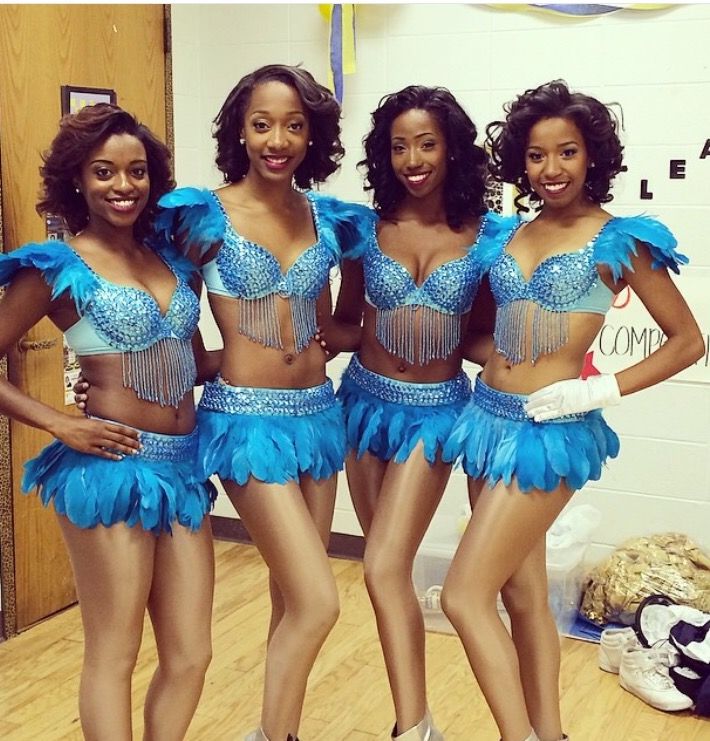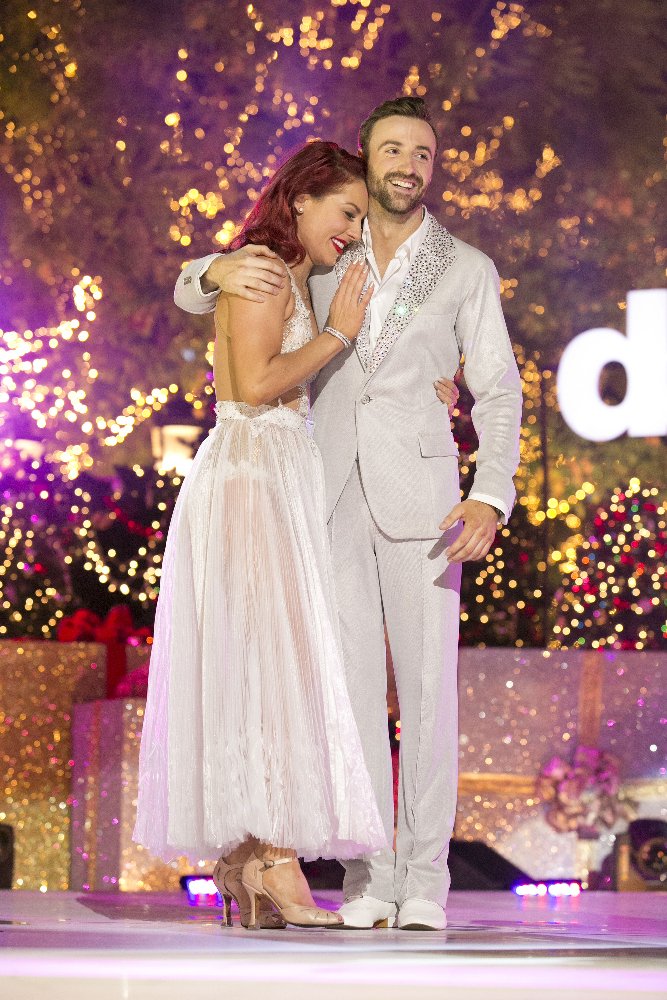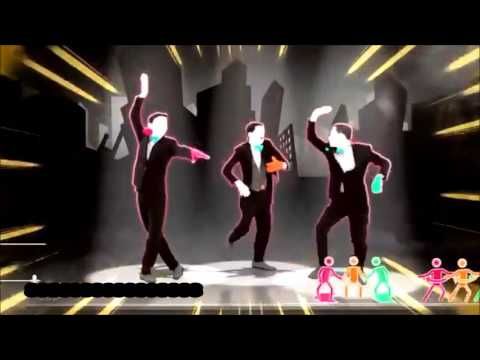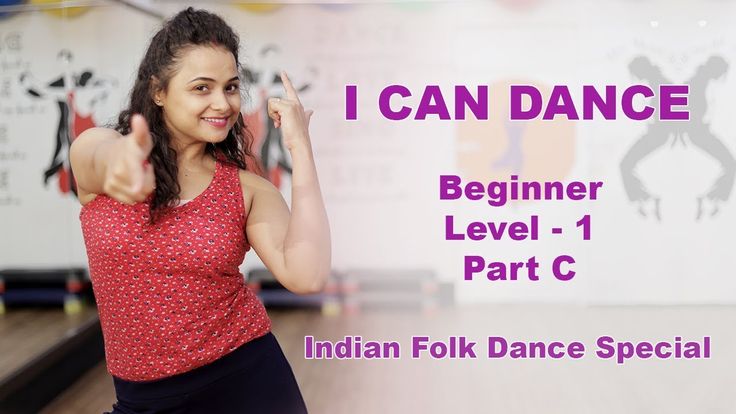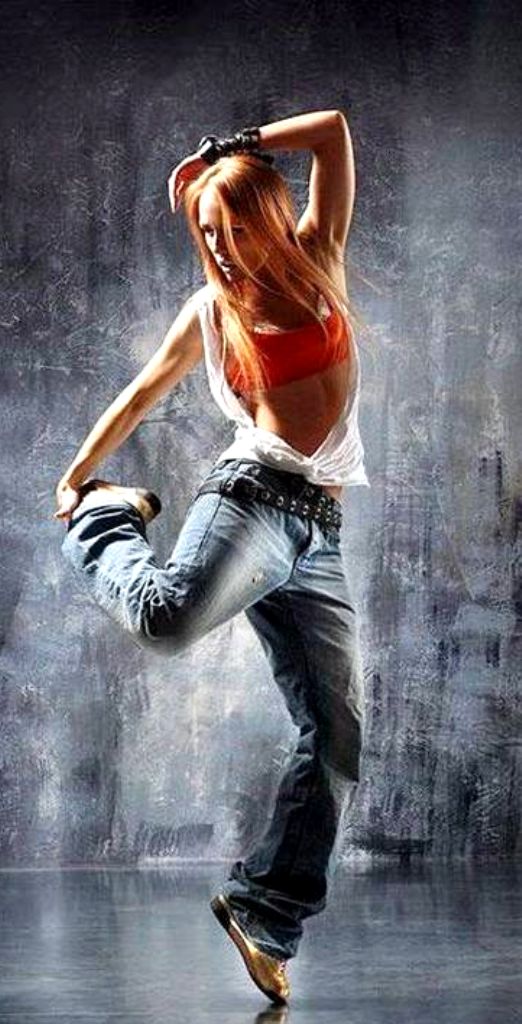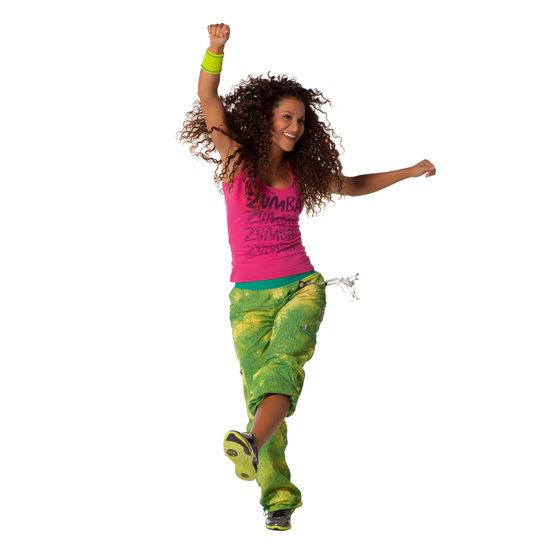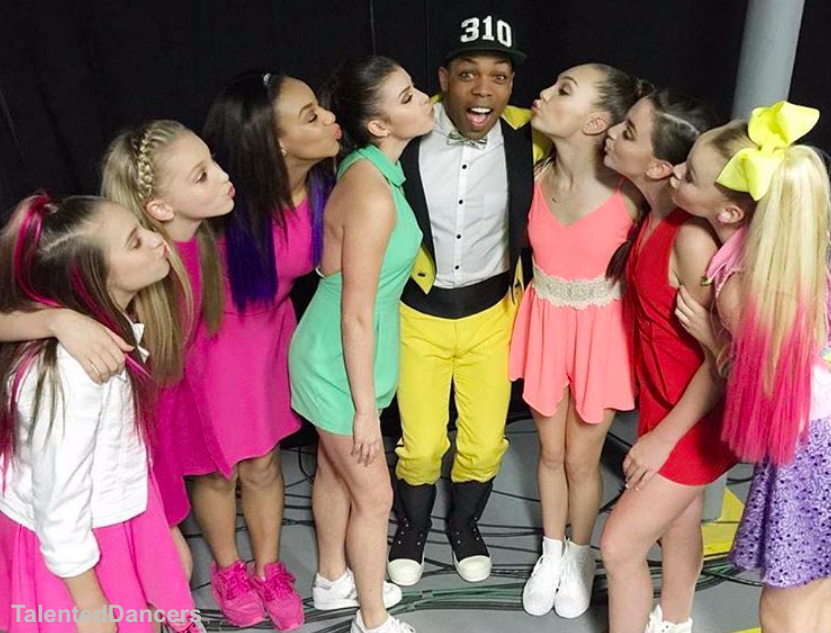How to dance battle
the rules of street dance competitions
© Little Shao/Red Bull Content Pool
Street dance battles follow their own rules, and sometimes they’re not that easy to understand. Here's a basic rundown to help you follow and understand all the elements of a competition battle.
By Emmanuel Adelekun
8 min readPublished on
These are the basics for competitions
O'trip House doing a routine
© Little Shao/Red Bull Content Pool
Most competitions are straight knockout battles. Some involve two individual dancers competing against each other in one-on-one battles, but you also have competitions where teams of dancers, known as crews, compete against each other. These crews can be anything from two dancers in each crew, up to eight or ten dancers, and sometimes more.
In crew battles dance routines involving anything from two members to the whole crew, are usually allowed to be performed when it is that crew's round. The other crew do not have to do a routine in response if they don't want to, it is completely up to each crew to decide what they do in each round unless the competition's specific rules say otherwise.
Individuals, or crews, dance one at a time in the middle of the dance floor. There is a chosen number of times each dancer, or crew, gets to dance, called rounds.
Dancers go back and forth, doing their rounds, until they have finished and then the chosen panel of judges individually decide who they believe won the battle by pointing at their personally chosen winner, or holding up a card with their winner's name on it.
Check out an example in the clip below:
6 min
Shigekix vs Alkolil – final battle
B-Boys Shigekix and Alkolil battle each other for the Red Bull BC One World Final 2020 title.
Shigekix
The winner of the battle goes on to the next round and the loser is knocked out of the competition.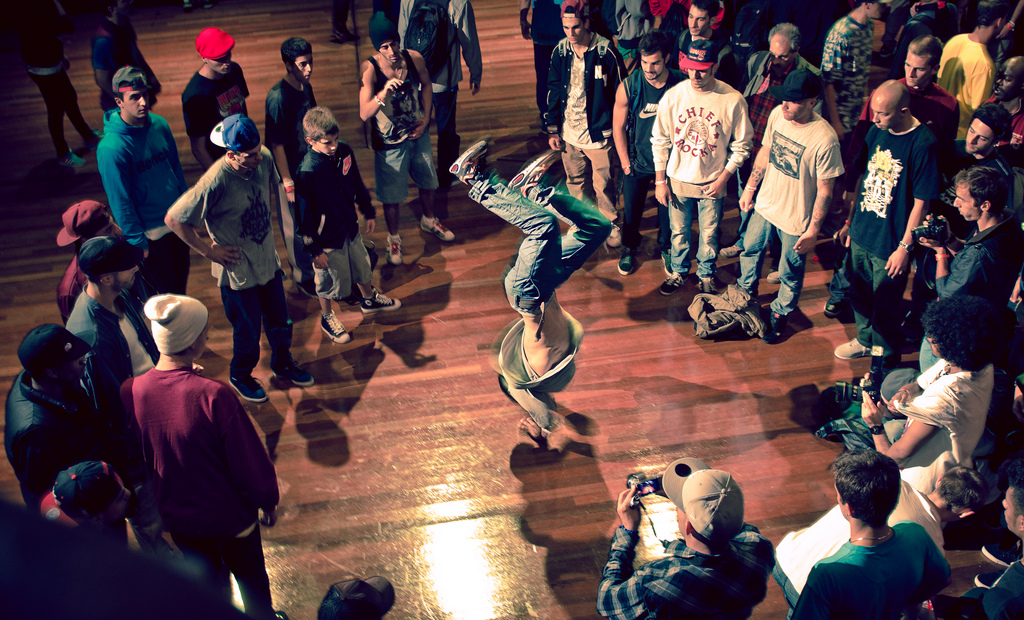
This goes on until there are two dancers, or two crews, left, at which point there is a final battle and an overall winner of the event is chosen.
Logistx is the Red Bull BC One B-Girl champion of 2021
© Romina Amato / Red Bull Content Pool
How many competitors are in a competition?
The average number of dancers picked to battle in a competition is usually 16 individual dancers or eight to 16 crews, competing in one chosen style, or in a mixed styles battle. But there can be anything from four to 32 dancers, or crews, competing in the main battle.
To compete in the main battle the dancers must first be picked from a qualification, in which they earn the right to compete in the main event by being picked by the judges. There can be anything from 30 up to 500 dancers entering a qualification, which is usually done in five different ways:
A Showcase Round: This is where the dancers are called up to perform, one by one, in front of the judges.
 Their performance is scored and when everyone has been seen by the judges, they then pick the dancers with the highest scores to compete in the main competition.
Their performance is scored and when everyone has been seen by the judges, they then pick the dancers with the highest scores to compete in the main competition.Showcase Battles: In this dancers, or crews, compete against each other in showcase battles that usually are only one round each, or have a time limit if it's crews. No winner is picked from the battle, the dancers are simply scored by the judges on their performance in the battle and the judges pick the highest scoring dancers, or crews, to compete in the main competition.
Cypher Qualification: A Cypher is the term used when dancers gather in a circle and, one-by-one, dance inside that circle. Some competitions use this to determine who will be picked for the main competition. When this happens the DJ will usually play music for anything from 30 minutes up to an hour and a half. Dancers usually are given a sticker with a number on it and then form their cyphers and simply dance as much as they want.
 The judges go from circle to circle watching the dancers and writing down the numbers of the ones who impress them the most. Once the time limit is up the judges get together and find out which numbers they all wrote down and these are the ones picked to battle in the main competition.
The judges go from circle to circle watching the dancers and writing down the numbers of the ones who impress them the most. Once the time limit is up the judges get together and find out which numbers they all wrote down and these are the ones picked to battle in the main competition.Being a winner of a previous Qualification Battle: This is when the dancers chosen to compete in the main competition are winners of another competition, in which they won the right to then compete at this later one.
By Invitation: The fifth and last one is through simple Invitation. This is when a dancer has earned a well known reputation through doing well at, and winning, various competitions locally or internationally, and so are then invited by an event promoter to come and compete at their competition.
Who are the judges and what is their job?
Judges are usually well-known, respected dancers who have earned their place on the panel through years of competing and winning, or from being known for their historical contribution to the dance scene.
Competitions always have an odd number of judges to avoid ties, and usually are a panel of three or five individuals.
Each judge usually only has one vote in each battle and the winner of a battle is the dancer who gets the most votes.
The judges point at the winner
© Gianfranco Tripodo/Red Bull Content Pool
Sometimes there ends up being a tied decision, which usually happens in two ways:
Judges themselves are allowed to use their individual vote as a tie if they believe the battle is drawn. This can result in the battle itself being a tie if all the judges vote a tie.
If one judge votes a tie and then the other judges evenly vote separate ways.
If this happens the competing dancers, or crews, will then have to battle one more round for the judges to then vote on again. If there is another tie then the dancers do another round, and will continue to do this until the judges come to a decision that isn't a tie.
But, if all the judges, apart from one, vote a tie, then the dancer who gets that one vote is the winner.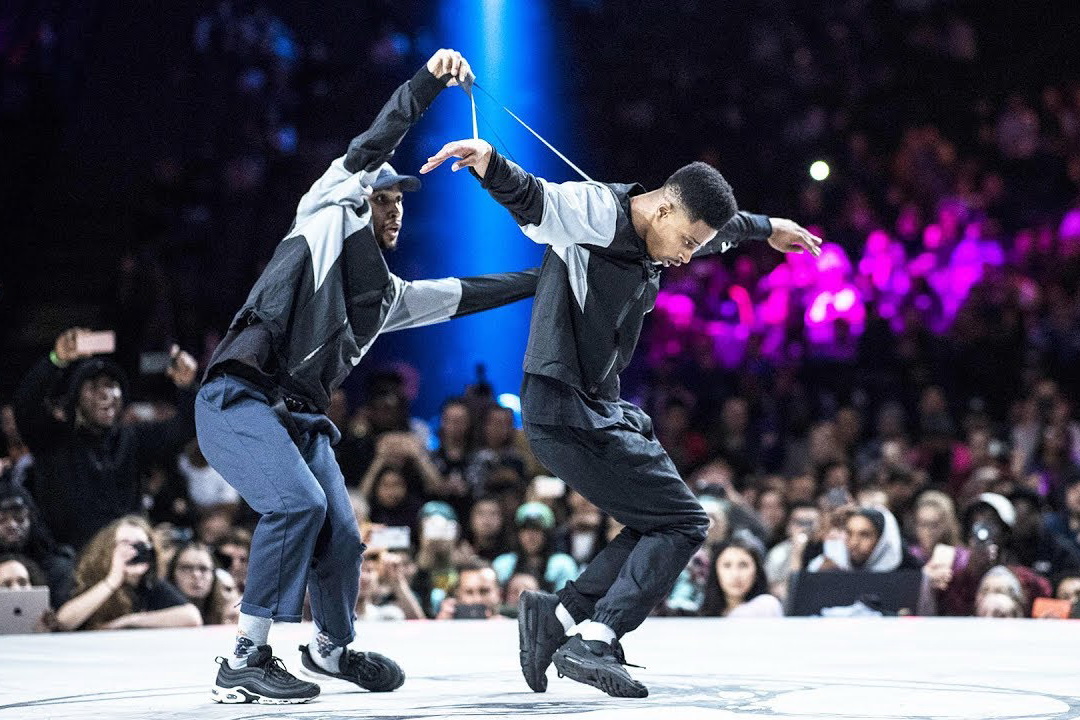
What are the judges looking for to determine the winner?
To make their decision, judges usually all have a general criteria which consists of about eight elements that they all look at. In no particular order, these are...
Musicality
How well a breaker connects with and expresses the music through their dance.
Foundation
Showcasing mastery of the basics top rock and footwork steps, go downs, transitions, freezes and power moves.
Character
How well a breaker expresses their personality through their dance.
Difficulty of movement
The level of dynamic movement a breaker possesses and showcases.
Style
If a breaker showcases a way of moving that’s unique to them.
Execution
Performing moves in a clean and secure way, without messing up.
Composition of round
Telling a story with your round, having a beginning, middle and end that makes sense and flows.
Originality
Coming up with fresh variations on existing moves, or completely new, and creative moves, and ways of moving that the judges haven't seen before.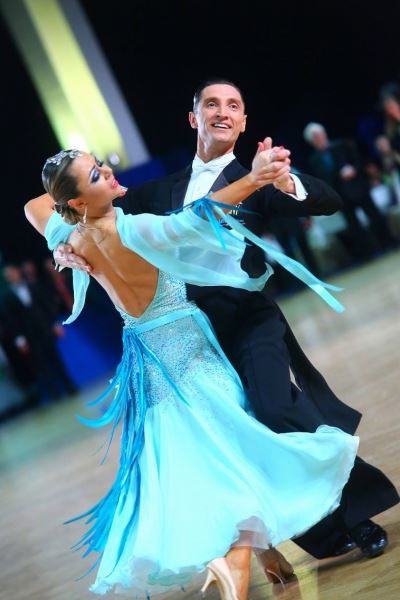
When the battle is a straight one-on-one knockout competition, judges will take the whole criteria into account, with each judge deciding for themselves which elements carry more weight than others. But when a battle follows a different concept or format, certain elements of the criteria can then become more important than others and change how a judge judges a competition.
Here's a list of four different competition formats and what criteria elements might carry more weight in the judge's decision for each one:
Qualification/Showcase/Prelim Rounds: Judges can only pick a small number of qualifying breakers in these and they have to be strict in their scoring to make their selection, and so 'execution' becomes one of the biggest elements in their criteria. Any mess-ups or crashes from breakers failing badly to execute their moves makes it a lot easier for a judge to narrow down their picks, and score that breaker low. Character also plays a big role here, as does 'difficulty of movement'.

Cypher king/queen competitions: Style, character, and 'musicality' usually are the more valued elements on a judge's criteria, for a cypher competition, which take place in the circles that breakers form and, one-by-one, dance inside. Breakers will usually be given a sticker to wear with a number. Judges will then spend the time watching the cyphers and writing down the numbers of the breakers who impress them the most. (Sometimes the judges are unknown and could be one of the breakers in the cyphers.) Once the time limit is up the judges then get together, decide who impressed all of them the most and then that person is crowned the cypher king or queen.
Crew battles: Those who are judging a crew battle are usually called upon to grade multiple numbers of rounds from each side; this could be as few as the rounds each in a three-on-three battle, or up to as many as 16 rounds per crew if it's a full eight-on-eight crew battle with somewhere in the region of a 15-minute time limit.
 The unique thing about a crew battle is that it gives a chance for each side to showcase every element in a judge's criteria by strategically sending out breakers who are strong in particular criteria elements. This means that a good crew can dedicate the order of the criteria the judges use with the strategy with which they send out their team members.
The unique thing about a crew battle is that it gives a chance for each side to showcase every element in a judge's criteria by strategically sending out breakers who are strong in particular criteria elements. This means that a good crew can dedicate the order of the criteria the judges use with the strategy with which they send out their team members.
Final
Watch as crews showcase their skills at the 30th anniversary of Battle of the Year in Montpellier, France.
The exception: crowd-judged battles
Some events, like Red Bull Dance Your Style, are judged by the audience, who might not understand the technicalities of dancing but are fans who come to enjoy the competition. When crowds are judging, usually the highest things on the criteria becomes difficulty of movement and character. If a breaker can drive a crowd crazy by doing spectacular, unbelievable, high-level moves, the crowd are usually more likely to vote for that dancer. Musicality is also big here but usually has to be executed to a very high level for an audience of fans to really understand and see. A crowd isn't usually too concerned with execution, foundation, or how a round is put together. They usually want to be wowed with moves and drawn in by a dancer's character.
Musicality is also big here but usually has to be executed to a very high level for an audience of fans to really understand and see. A crowd isn't usually too concerned with execution, foundation, or how a round is put together. They usually want to be wowed with moves and drawn in by a dancer's character.
Crowd voting at Dance Your Style
© Alex Grymanis/Red Bull Content Pool
What You Should Know Before Going To A Freestyle Jam
You’ve seen You Got Served. You know the hype we’re talking about. Two people goin’ at it on the dance floor, constantly trying to one-up the other.
The air is thick with anticipation. The crowd grows wilder and wilder. Oof. Chills.
You may dance primarily through taking classes or being on a team, but the history of our urban dance culture is still rooted in street dance!
This scene of a battle is not so removed from the “choreo” scene as you may think.
(Our freestyler friend Ben Lee, AKA “Smoke,” wrote about this relationship in “The Fundamental Difference In Attitudes Between The Freestyle And Choreography Communities.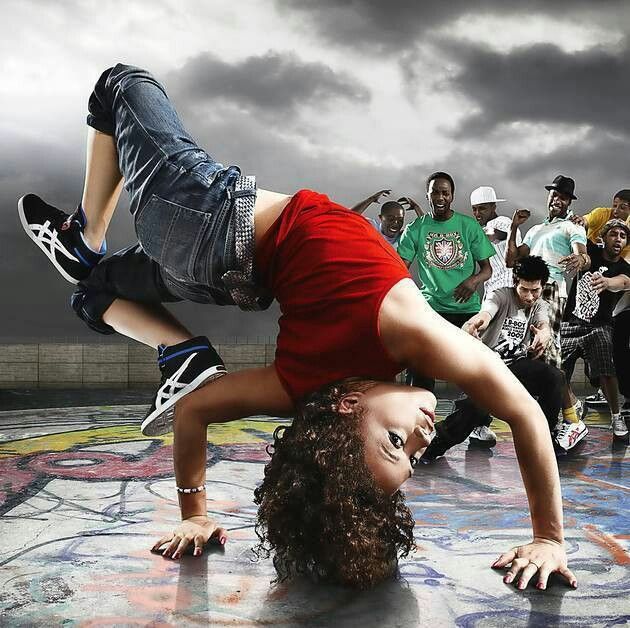 ”)
”)
If you’re interested in learning more about the street dance scene, then go to a freestyle jam! Freestyle jams are a tournament of dance battles.
Movies kind of portray what it’s like to witness a freestyle battle, but they’re nothing like experiencing one in real life.
And you can watch a series of battles at a jam. Whoa.
Not only will you get an authentic taste of battling, but you will also be introduced to the community of freestyle dancers who keep the culture alive.
Want your first freestyle jam to be awesome and know what’s going on? With Ben’s help, here’s what you should know.
How Freestyle Battles Started
In the 70’s, individuals started to battle each other because dancing was a way for them to blow off steam, prove themselves, or be accepted as members of crews in the community.
Dance saved lives. In New York, battling was a common way to settle beef.
Instead of resorting to violence and gangs, dancers had a way to sort through issues with other groups without being physically attacked.
It was a system based on skill and respect rather than brutality.
Battle culture exploded on the scene during the 70’s and 80’s in America.
Movies like Beat Street, Wild Style, and Breakin’ played a big role in exposing the street dance and battle culture to the general public.
When you think of other types of dance (like ballet or belly dance), there’s no component of battling face to face with someone else.
But when you think of street dance, your mind intuitively think of battling. Later, movies like You Got Served and Stomp The Yard reinforced this image.
As produced as they are, these movies shined a spotlight on the dance world.
Audiences and movie studios are naturally drawn to the classic story arc embedded in dance battles. The conflict, the resolution, and the victor who became a hero.
The Structures Of Battles
The rounds in a freestyle jam are organized with brackets, tournament-style.
The tournament has limited spaces, so if too many dancers register, there is a preliminary round.
This is where each dancer will freestyle in front of the judges, who choose the top 16 there.
From the prelims, the dancers (or groups of dancers) will take turns dancing in “rounds” of the battle.
This is usually around 30 seconds to a minute on the floor for each dancer.
After each of the dancers take their turn, the judges will decide on a winner (usually indicated by pointing / gesturing at the dancer they thought deserved to win the round).
The winner advances up the brackets to battle another winner from a different round.
Freestyle jams are getting more creative with how they seed battles.
Especially ones (like in Europe or Asia) where there are thousands of participants, it is inefficient to use the traditional structures for battling.
For example, there are battles where the participants are split into groups, and a judge runs their own prelim round for that group.
The dancers who make it past the prelims from each of those groups will go on to the battle with the rest of the winners.
Solo battles and team battles
A 1 versus 1 battle is when an individual dancer goes up against other individual dancers.
2v2, 3v3, 4v4… (and so on) refers to the number of people in each crew. In these battles, the crew members each have a turn in each round of the battle.
Judging is done a bit differently for team battles.
In 1v1 battles, the emphasis is on your individual skill and style.
In 2v2 and on, judges look for all this plus chemistry. They ask themselves, “Are they able to dance together? Did they come prepared as a unit? Are they having fun?”
Single style vs. All-styles battles
You may also see battles in specific styles (such as a “1v1 Locking” or “2v2 Popping”). And there are “All-Styles” and “Open Styles” battles.
The battles in specific styles are judged based on the dancer’s mastery within that style.
In an All-Styles battle, judges look for a dancer’s exhibition of at least 2 styles, as well as their ability to transition between those styles within their round.
What You Should (And Shouldn’t) Do At A Freestyle Battle
Will it be your first time attending a freestyle jam? Here are some useful tips on how to make the most of your experience!
1. Don’t just… stare
You will be blown away by the talent, creativity, and personalities at a freestyle jam.
While you definitely should watch and appreciate, staring creates a barrier between you and the community, closing off the connection that could happen if you were more casual.
“By being in that space, you’re already a part of that community.”– Ben
Just be comfortable! We’re all fans and friends.
2. Cheer!
The energy at a jam is everything. And giving props is the easiest ways to raise the vibe of the room.
“If you don’t cheer, you’re actually lowering the vibe of the room because you are contributing to the silence.”
So when you see something you like, show it! Do that hand shaky thing, “WOO!,” call out a name, moan.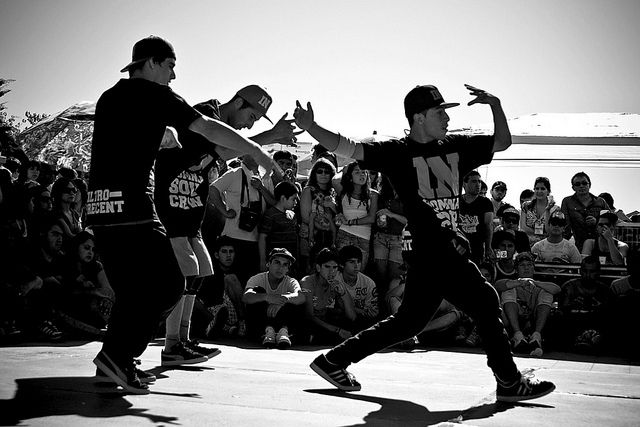 .. whatever way you prefer to give props.
.. whatever way you prefer to give props.
“As dancers, we’re trained to cheer for other dancers. It’s an act of acknowledgement and of celebration.”
3. Be humbled
As in any community, the freestyle community experiences a constant influx of young talent – as well as the refinement of old talent.
All this talent, your own included, should humble you.
The biggest reason freestyle battlers have been able to grow so much is because everyone knows to stay on their game.
No matter what path they took, every single dancer has lost several times. And it’s understood that anyone who has become beastly really worked to get there.
There are no shortcuts in freestyle.
“Be humbled from the get go. Your humility should be apparent.”
4. Listen to the music
“If you don’t listen to the music, then you’ll never understand the culture.”
Jams are all about the collective energy in the space and the energy is set by the music.
By listening to what everyone else is listening to and watching what everyone else is watching, the energy in the room multiplies.
“The aim is to reach a state of elevated consciousness. Battling unlocks a part of your brain that unites you with another. Dancing creates a message that resounds in you, in the person you’re battling, and in anyone watching. By doing so, we’re sending out the message that you don’t need violence to solve conflict. It’s in the togetherness that we figure it out.”
So be there. Be present. Be with. It all starts with something as simple as listening to the music.
5. Listen to the Emcee
The emcee is there to unite everyone at the jam.
Don’t ignore them or try to talk over them. They’re trying to get everyone to do something together – which is the exact point of the battle.
By being unified in thought and action, the event becomes a movement.
So help them help you have a good time. Being unruly at a jam is disrespectful to everyone there.
Listen to the emcee, vibe with the rest of the crowd, and become a part of the movement!
6. HAVE FUN!!!
These are a few notes to keep in mind, but the most important thing for you to do is to just have fun and appreciate the energy around you!
“The essence of battling is that no matter what issue you’re dealing with, even if it seems like one with another person, you will always find the answer within yourself. The external is just a way to visualize and express it.Although battling can be seen as a release of aggression, it’s because we never want to be aggressive. Dance is a way people transcend through their struggles, not going above or around it. It’s about appreciating those experiences and making something good from going through it.”
This individual strength becomes a collective strength. And the strength of the community is what attracts dancers all over the world to freestyle dance.
It’s what builds communities, tells stories, and starts movements.
The dance community opens its doors for anyone willing to step in.
We hope this helped you in your first steps at a freestyle jam! Huge shoutout to Ben “Smoke” Lee for helping us write this article!
What do you love most about the freestyle community? Comment below to share with us!
Need some new moves and inspiration to add to your freestyle?
Take some classes on STEEZY Studio. Sign up today to start your training!
Street Dancing: How the Dance Battle Works
Competition Rules
Most of the competitions are held in the knockout battle format. Some of them involve only two dancers competing against each other in one-on-one battles, and there is also the concept of entire teams competing against each other. Each team can consist of two dancers to eight, ten, and sometimes more.
In team battles, any number of people can participate in a routine (prepared bundle) - from two to the whole team, the dance is performed during the round. Opponents are not required to respond with a routine, each team independently decides what they do during their round, if certain rules are not stipulated within the competition.
Opponents are not required to respond with a routine, each team independently decides what they do during their round, if certain rules are not stipulated within the competition.
O'trip House doing routine
© Little Shao/Red Bull Content Pool
Dancers or teams take turns dancing in the middle of the dance floor. Each dancer or team dances a certain number of rounds
The dancers take turns moving to the middle of the stage, dancing for the duration of their round. The chosen panel of judges then decides who they think won the battle by personally voting for the winner or holding up the card with the winner's name.
The winner of the battle moves on to the next round, and the loser is eliminated from the competition.
This continues until there are two dancers or two teams left. After that, the final battle takes place and the absolute winner of the competition is selected.
Menno wins Red Bull BC One 2017
© Little Shao/Red Bull Content Pool
How many people can compete?
The average number of dancers selected to compete is usually 16 solo dancers or 8 to 16 teams competing in a single style or mixed style battle.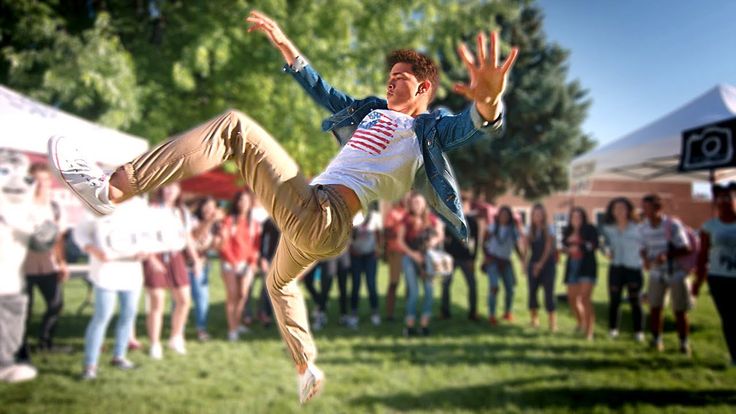 But in the main battle, from 4 to 32 dancers or teams can participate.
But in the main battle, from 4 to 32 dancers or teams can participate.
In order to participate in the main battle, dancers must first pass the qualifying stage, where judges will select participants with the necessary qualifications. From 30 to 500 dancers can take part in the qualifying stage. There are five ways to enter the competition.
-
Showcase round: dancers take turns performing in front of the judges. The judges evaluate each participant, then choose the best dancers with the highest scores. They are allowed to compete.
-
Showcase battle: in this case, dancers or teams compete against each other in an exhibition battle format, usually consisting of only one round, and in the case of team battles, a time limit may also be introduced. There is no one winner in the battle: the judges evaluate the performance of the participants in the battle and choose the dancers or teams with the most points. They will be allowed to participate in the main competition.
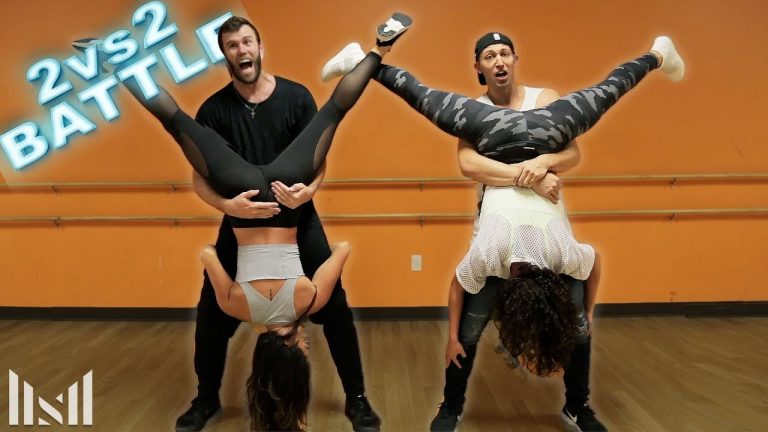
-
Preliminary Cypher: The cipher format involves the dancers gathering in a circle and then taking turns moving to the middle and dancing. Usually the duration of the music program put on by the DJ is from 30 minutes to an hour and a half. The dancers are usually given a sticker with a number, and then they stand in circles and just dance for as long as they want. The judges move from circle to circle, observing and judging, as well as recording the numbers of those dancers who made the most impression on them. After the performance time is up, the judges get together and analyze which participants' numbers were recorded and marked by all the judges. It is these dancers who will be allowed to participate in the main competition.
-
Winner of the previous qualifying battle: in this case, the dancer is allowed to participate in the competition based on winning another tournament.
-
By Invitation: The fifth and final way to compete is simply by getting an invitation.
 If a dancer is known and has a good reputation due to his performances and victories in various competitions at the local or international level, then the organizer of the event can directly invite him to take part in the battles.
If a dancer is known and has a good reputation due to his performances and victories in various competitions at the local or international level, then the organizer of the event can directly invite him to take part in the battles.
Russian cipher Red Bull BC One
© Dmitriy Tibekin / Red Bull Content Pool
Who are judges and what do they do?
As a rule, judges are well-known and respected dancers who are members of the judging panel based on their years of experience, numerous victories in various competitions or thanks to their global contribution to the dance field.
Competitions always have an odd number of judges to avoid situations with a tie. As a rule, the judging staff includes three or five people.
Each judge only votes for one contestant in each battle, and the dancer with the most votes is the winner.
The Judges Point to the Winner
© Gianfranco Tripodo/Red Bull Content Pool
Votes sometimes result in a tie, and this is preceded by one of two scenarios.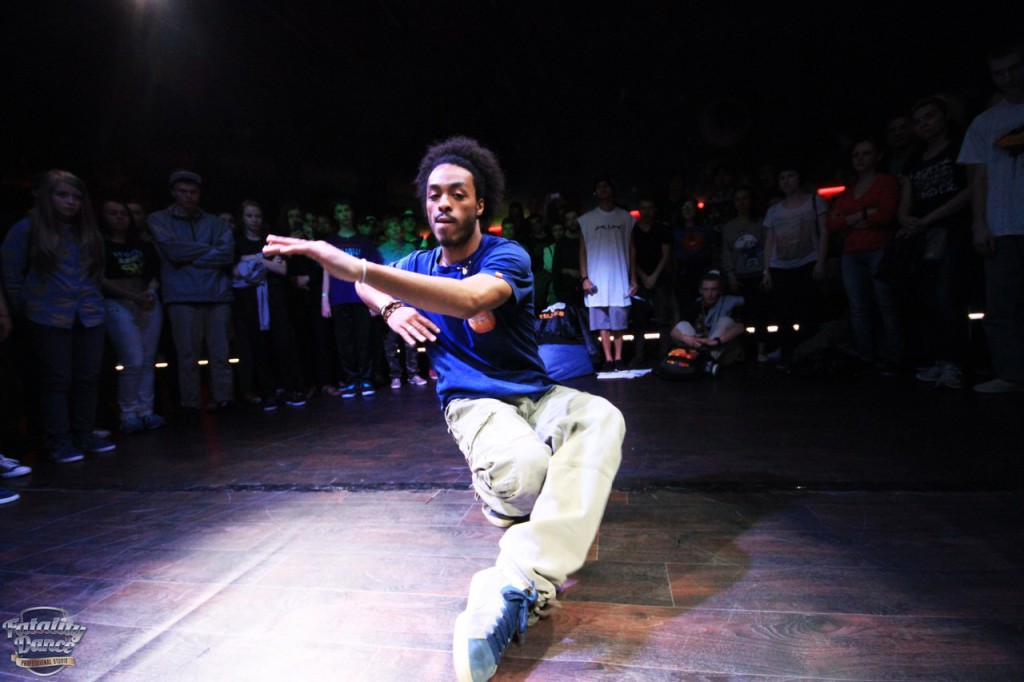
-
The judges may vote for a draw if they believe that the level of the dancers participating in the battle is equal. The battle can end in a draw if all the judges vote for this result.
-
There may be a situation in which one judge votes for a draw, and the votes of the other judges are divided equally.
In this case, the competing dancers or teams will have to play another round for the judges to vote again. If this additional round also results in a tie, the dancers play another round and continue to do so until the judges reach a decision that will determine the winner.
But if all but one of the judges voted for a draw, then the winner is the dancer who receives the casting vote of the judge who did not vote for the draw.
What criteria do the judges evaluate when determining the winner?
As a general rule, judges base themselves on a general list of eight criteria that they pay attention to when judging.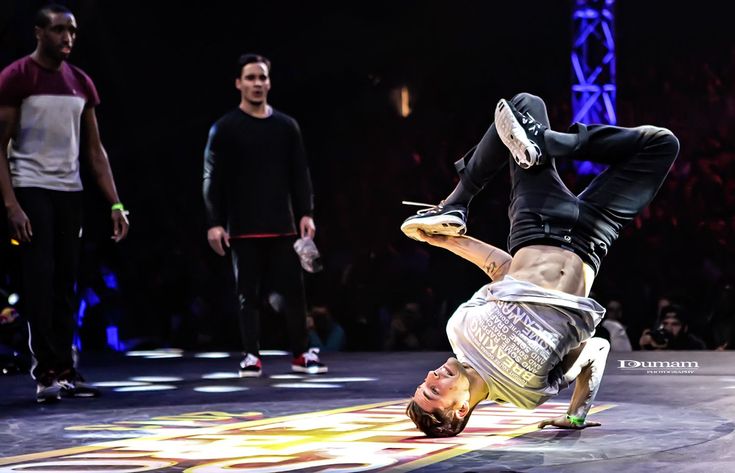 These criteria are given in no particular order:
These criteria are given in no particular order:
Musicality
How well the dancer feels the music and uses it to express himself in the dance.
Mastery of the base
Demonstration of excellent mastery of the basics of top rock and footwork, descents, transitions, freezes and power moves.
Individuality
How well the dancers express their individuality in dance is judged.
The complexity of the elements
The level of dynamism of the movements that the dancer demonstrates.
Uniqueness and individuality of style are judged.
Execution
Technical and clean execution of elements without errors.
Round composition
The performance in the round must have a beginning, middle and end, which are connected by smooth and logical transitions.
Originality
Original variations of familiar movements, execution of completely new and unusual elements, as well as demonstration of a technique that the judges have not seen before.
When a battle is a one-on-one elimination competition, the judges take into account all the criteria, with each judge independently deciding which points are more important. If the battle has a different concept or format, judges may pay more attention to some criteria than others, and accordingly, the general approach of the judge to assessing performance in competitions may change.
Below are the four different competition formats and a list of criteria that the judges primarily look at in a given competition:
-
Qualifying/showcase/preliminary rounds. Judges can choose a limited number of dancers. They strictly evaluate the performances, so in this case the criterion "performance" becomes the key. Any inaccuracies and errors in the performance of movements become a reason for giving a low score and simplify the task for the judge, narrowing the circle of applicants. The criteria "individuality" and "complexity of movement" are also of great importance.

-
Cypher king/queen competition. The judges pay great attention to criteria such as "style", "personality" and "musicality". In this format, breakers form a circle, then take turns starting to perform in the middle of it. As a rule, dancers are given a sticker with a number. The judges observe the participants and write down the numbers of the participants who made the greatest impression on them. (Sometimes the judge remains incognito, and it can be any member of the cipher). At the end of the time, the judges gather and decide who made the greatest impression on them - this person will be given the title of king / queen of the cipher.
-
Team battles. The uniqueness of the team battle lies in the fact that different criteria are evaluated in different rounds, and based on this information, you can send the strongest team members to participate in certain rounds. This means that the team can strategize and send the strongest dancers to participate in the respective rounds.

Final
Watch as crews showcase their skills at the 30th anniversary of Battle of the Year in Montpellier, France.
Exception: audience-selected battles
On some projects, such as Red Bull Dance Your Style, the performances are judged by the audience, who may not understand all the subtleties, but simply dance lovers who came to enjoy the bright performances. The audience, evaluating the performances of dancers, as a rule, pays more attention to such criteria as the complexity of the elements and individuality. Viewers are more likely to vote for a dancer whose performance was able to inspire them and included high-level technical elements. The criterion of musicality is also important, but it must be at a very high level so that the audience can understand and appreciate it. Usually the audience does not pay much attention to the criteria of performance, possession of the base or composition of the round. As a rule, technical movements and individual style make a big impression on the audience.
As a rule, technical movements and individual style make a big impression on the audience.
The crowd votes for Dance Your Style
© Alex Grymanis/Red Bull Content Pool
Dance battles are the fights of our time
What are battles and what or who do they dance with? Modern dancers do not always know that the definition of "battle" is translated from English as "duel" and is one of the fundamental concepts in hip-hop dance culture. Battle is a special competition of dancers, during which they compete in skill, improvising to changing rhythms. To win a dance battle, you need not only to dance well, but also to ignite and surprise the audience as much as possible, to try to surpass your opponent with stunning pirouettes, high jumps and original author's tricks and acrobatic elements.
In what style can you compete for the championship?
You can conduct a dance battle in almost any dance style, however, there are a number of directions for which battles are typical and natural. For the most part, these are followers or offshoots associated with hip-hop culture. The most popular battles are breakdance, tectonics, shuffle, jumpstyle and new-style dancers. Such battles among the masters of energetic trends look not only interesting and dynamic, but downright magical effect on the audience. A real break dance battle is adrenaline and rivalry, a clash of two characters, emotional release multiplied by the energy of the crowd.
For the most part, these are followers or offshoots associated with hip-hop culture. The most popular battles are breakdance, tectonics, shuffle, jumpstyle and new-style dancers. Such battles among the masters of energetic trends look not only interesting and dynamic, but downright magical effect on the audience. A real break dance battle is adrenaline and rivalry, a clash of two characters, emotional release multiplied by the energy of the crowd.
What to expect from a dance battle?
To understand the nature of dance battles, you don't have to go to a club, you can just look at films whose genre is closely related to this enchanting action, for example, the "Step Up" series of films. These dance scenes clearly show what battles are and accurately convey the intensity of tension and the invigorating atmosphere of dance duels involving two people or a whole group of dancers.
But if there is no opportunity to watch the above films, then you can find out all the information about the battles below, of course, not so clearly, but no less truthfully. The main protagonists of the battle are the dancers, but the observers who will support them are no less important.
The main protagonists of the battle are the dancers, but the observers who will support them are no less important.
The duel begins immediately after the required number of dancers has gathered. Professional hip-hop battles have their own ratings, which allow you to correctly distribute the dancers in places, taking into account all the tricks and tricks, as well as the author's elements that they showed during the fight.
The dance competition is accompanied by a display of the actual relations of the participants, such as hostility, hostility or defiance. As a rule, these elements heat up the audience even more, so even friends play a fierce rivalry, albeit not for real. The spectators, in turn, express delight or disappointment with the help of applause, whistles or loud shouts.
Benefits of competition - hardening the spirit of the dancer and inspiration
Modern battles completely replace traditional dance competitions. The dancer does not have to go through a long process of registration and preparation for the competition, he can simply come to the dance club and express his emotions, while sorting out relationships with eminent hip-hop masters and rookie rivals.

